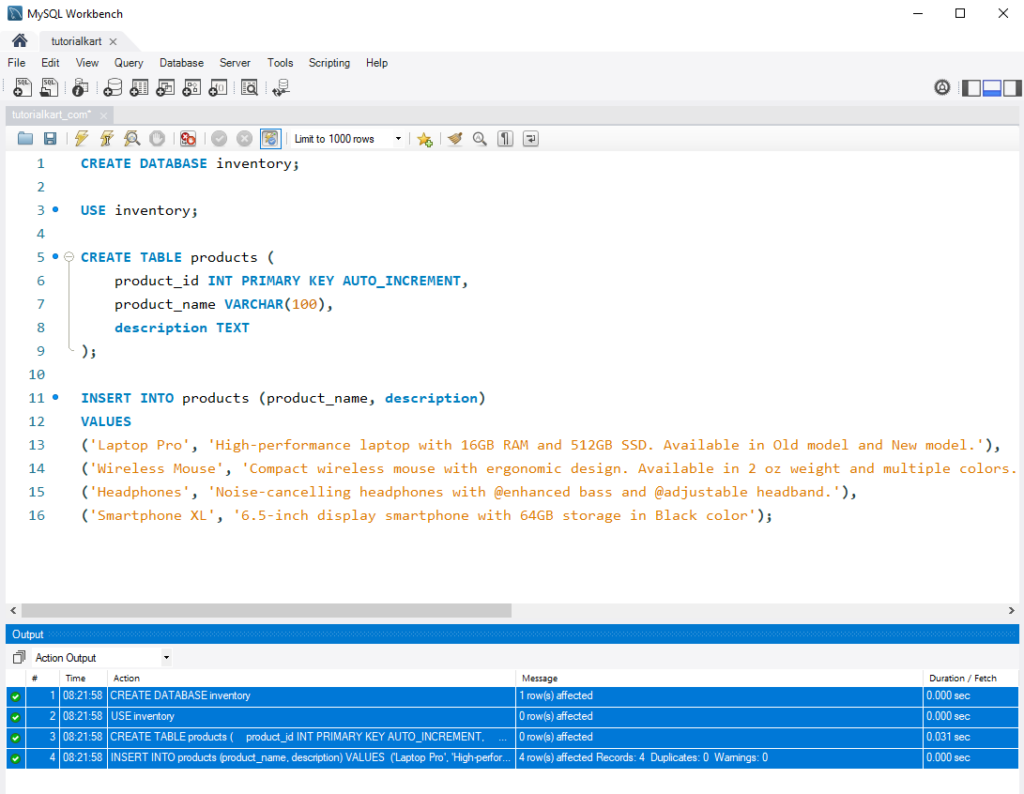SQL REPLACE()
The SQL REPLACE() function is used to search for a specified substring within a string and replace it with another substring. This function is useful for cleaning or modifying data by replacing characters, words, or symbols with desired values.
The REPLACE() function is available in SQL Server, MySQL, PostgreSQL, and other SQL databases, making it widely applicable for data manipulation tasks.
In this tutorial, we will go through SQL REPLACE() String function, its syntax, and how to use this function in SQL statements for string operations, with the help of well detailed examples.
Syntax of SQL REPLACE() Function
The basic syntax of the SQL REPLACE() function is:
REPLACE(string, substring_to_replace, replacement);Each part of this syntax has a specific purpose:
- string: The original string in which you want to search and replace.
- substring_to_replace: The substring that you want to search for in the original string.
- replacement: The substring to replace the specified substring with.
The REPLACE() function returns a new string with all instances of substring_to_replace replaced by replacement.
Setup for Examples: Creating the Database and Table
We’ll create a sample products table with fields product_name and description to demonstrate the REPLACE() function examples.
1. First, create a new database called inventory:
CREATE DATABASE inventory;2. Select the inventory database to work with:
USE inventory;3. Create a table named products with fields product_id, product_name, and description:
CREATE TABLE products (
product_id INT PRIMARY KEY AUTO_INCREMENT,
product_name VARCHAR(100),
description TEXT
);4. Insert sample data into the products table to use with the REPLACE() function examples:
INSERT INTO products (product_name, description)
VALUES
('Laptop Pro', 'High-performance laptop with 16GB RAM and 512GB SSD. Available in Old model and New model.'),
('Wireless Mouse', 'Compact wireless mouse with ergonomic design. Available in 2 oz weight and multiple colors.'),
('Headphones', 'Noise-cancelling headphones with @enhanced bass and @adjustable headband.'),
('Smartphone XL', '6.5-inch display smartphone with 64GB storage in Black color');With this setup complete, we can run the REPLACE() function examples to test and view results in the products table.

Examples: Using REPLACE() in SQL Queries
We’ll go through examples demonstrating the REPLACE() function in SQL, using sample data from a products table with fields product_name and description.

1 Replacing a Word in Product Descriptions
To replace the word “Old” with “New” in the description column:
SELECT product_name, REPLACE(description, 'Old', 'New') AS updated_description
FROM products;This query returns the description for each product with “Old” replaced by “New”. This can be helpful when updating terms or names in large data sets.

2 Replacing Spaces with Hyphens in Product Names
To replace spaces with hyphens in the product_name column, creating a URL-friendly format:
SELECT product_name, REPLACE(product_name, ' ', '-') AS url_friendly_name
FROM products;This query returns the product_name with spaces replaced by hyphens, making it suitable for URLs or file names.

3 Removing Unwanted Characters Using REPLACE()
To remove all instances of the character “@” from the description column:
SELECT product_name, REPLACE(description, '@', '') AS clean_description
FROM products;This query returns the description with all “@” symbols removed, useful for data cleanup.

4 Using REPLACE() to Standardize Case or Format
To replace the abbreviation “oz” with “ounces” in the description column:
SELECT product_name, REPLACE(description, 'oz', 'ounces') AS standardized_description
FROM products;This query returns the description with “oz” replaced by “ounces”, standardizing measurement units across product descriptions.

FAQs for SQL REPLACE()
1 What does the SQL REPLACE() function do?
The REPLACE() function searches for a specified substring within a string and replaces it with another substring.
2 Can REPLACE() handle NULL values?
If the input string or the substring is NULL, REPLACE() returns NULL.
3 Is REPLACE() case-sensitive?
Yes, REPLACE() is case-sensitive in SQL Server and MySQL, so “abc” and “ABC” are treated as different strings.
4 Can REPLACE() be used with numeric data?
REPLACE() works only with string data. To use it with numbers, you must first convert the number to a string.
5 Does REPLACE() modify the original data in the table?
No, REPLACE() does not modify the original data in the table. To update the data, use it within an UPDATE statement.
